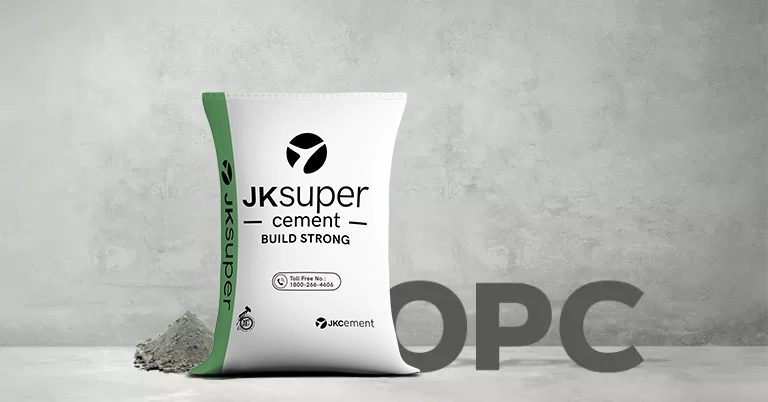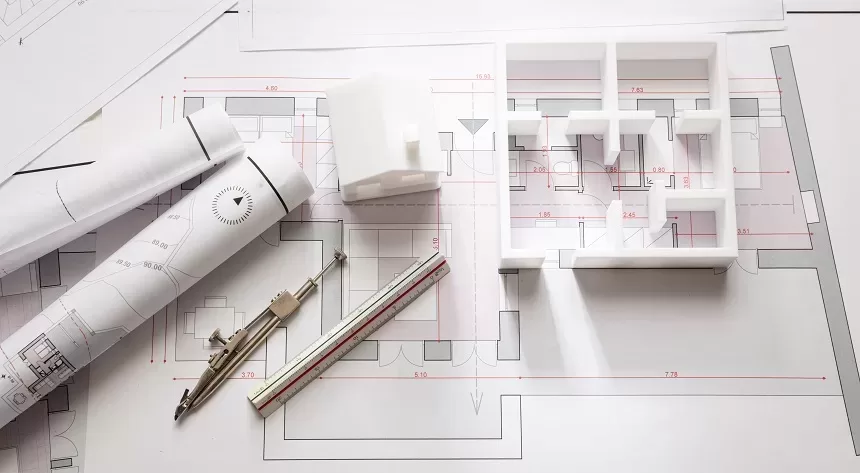Cement is a crucial component in the construction industry, serving as a binding agent for various construction materials such as concrete, plaster and mortar. India utilises various types of cement for construction purposes, including Ordinary Portland Cement (OPC), Portland Pozzolana Cement (PPC) and Portland Slag Cement (PSC), among others. These cement types cater to diverse construction needs, ensuring strength, durability, and versatility in different applications. Out of these, OPC is further categorised into three grades. Read on to learn about what the grade of cement is, its significance, and the various grades commonly used in construction projects.
Grade of Cement
The grades of cement refer to the strength and quality of cement. They determine the compressive strength of the cement at day 28 of concrete curing, and its suitability for specific construction purposes. In the case of OPC, the various grades are denoted by a numerical value 33, 43, or 53. OPC grade 33 will have a compressive strength of 33 N/mm2 at day 28 of curing and so on. The compressive strength of concrete is the ability of the concrete to carry load without deflecting. It is represented in Newton per square millimetre (N/mm2) or Megapascals (MPa).
Different OPC Cement Grades Used in Construction
Following are the different grade of cement used for construction:
33 Grade
33 grade cement is commonly used for general construction purposes where moderate strength is required. It has a minimum compressive strength of 33 MPa or N/mm2 after 28 days. This grade of cement is suitable for applications such as plastering, masonry, flooring, and non-structural works. It is not recommended for structural elements or projects that require high strength. OPC 33 has a fineness of 225 m2/kg. Fineness of cement is its particle size. The various specifications for OPC 33 grade are outlined in Indian Standard (IS) 269: 2015
43 Grade
43 grade cement is one of the popular choices for construction projects that require higher strength. It has a minimum compressive strength of 43 MPa at 28 days of curing. This grade of cement is suitable for reinforced concrete structures, precast concrete elements, and other load-bearing applications. It provides better durability and can withstand higher stress. IS 269:2015 provides information on the various requirements that cement manufacturers must conform to, to produce OPC 43. This grade of cement has a fineness of 225 m2/kg.
43-S Grade
Short for 43 sleeper grade, 43-S is a specific requirement of Ordinary Portland Cement used to manufacture railway sleepers. Railway sleepers are the components on which the rails are arranged. The sleepers receive the load from rails when a train passes. The load from the sleepers is then distributed to small rocks known as ballast, laid under the sleepers. 43 sleeper grade cement has a fineness of 370 m2/kg.
53 Grade
53 grade cement is a high-strength OPC grades available in the market. It has a minimum compressive strength of 53 MPa at 28 days, making it ideal for high-strength concrete applications. This grade of cement is commonly used in the construction of long-span structures like bridges, high-rise buildings, heavy-duty industrial structures, and infrastructure projects that demand exceptional strength and durability. IS 269:2015 covers the manufacture, chemical and physical requirements of 53 grade OPC. The fineness for OPC 53 is 225 m2/kg.
53-S Grade
53 sleeper grade or 53-S is a variant of OPC 53 grade made for railway sleepers. Cement used for railway sleepers must contain magnesia, tricalcium aluminate content and tricalcium silicate. The OPC grade has a fineness of 370 m2/kg.
It is important to note that the appropriate selection of cement grades should be accompanied by proper mix design, adherence to industry standards, and quality control measures to ensure the desired performance and longevity of the constructed structures. Consulting with engineers and following recommended guidelines can help in achieving optimal results while using cement of the appropriate grade.
JK Cement offers a range of OPC grade cement for your varied construction needs. Click here to know more.
FAQs
Which cement is best for house construction?
The choice between OPC (Ordinary Portland Cement) and PPC (Portland Pozzolana Cement) depends on the specific requirements of the project. OPC is commonly used for general construction, while PPC is known for its enhanced durability and resistance to cracks. Consider consulting with experts to determine the best option for your house construction.
Which is better, OPC 43 or 53 grade cement?
The selection between 43 grade and 53 grade cement depends on the strength requirements of the project. If you need higher strength for load-bearing structures or heavy-duty construction, 53 grade cement is preferable. For general construction purposes, 43 grade cement may suffice.
Can I use 53 grade cement for house construction?
Yes, you can use 53 grade cement for house construction. It offers higher compressive strength and is suitable for projects that require exceptional strength and durability. However, it is important to consult with engineers or construction professionals to determine if 53 grade cement is necessary for your specific house construction needs.
Can we use 53 grade cement for plastering?
While it is possible to use 53 grade cement for plastering, you may want to consider other cement options. 53 grade cement is primarily used for high-strength concrete applications and structural elements. For plastering purposes, a lower-grade cement, such as 33 or 43 grade, is usually more suitable as it provides adequate workability and adherence.
How is OPC manufactured?
OPC is manufactured by intimately mixing calcareous and argillaceous materials or other silica, alumina or iron oxide bearing materials. Further, this mixture is heated at high temperatures in a kiln to form Portland clinker. The resultant clinker is intimately ground with gypsum to produce Ordinary Portland cement.














